"Vermeer's life and art are closely associated with the city of Delft. He was born in Delft in 1632 and lived there until his death in 1675. Delft, despite being a commercial center in the mid-seventeenth century, was a provincial place. Its growth was restrained and orderly; its canals and houses small and unpretentious. Today, one still finds this tranquility in its tree-lined streets. Only its two great churches, the Oude Kerk and the Nieuwe Kerk, interrupt the low profile of the city's skyline.
Some of the difficulties of appraising Vermeer's achievement are inherent in any attempt to interpret the works of a previous era. Paintings are primarily a means of communication. Through them, artists strive to relate stories, ideas, moods, and credos. Delft in the early 1650s became an active and exciting place for a young artist like Vermeer. The stylistic conventions that had recently dominated the city were replaced by fresh approaches to the depiction of landscape, cityscape, architectural painting, portraiture, and genre painting. Whereas Delft artists in the first half of the century had effectively removed their subjects from the context of daily life, those working after 1650 actively sought to depict man within, and reacting to, a specific environment. In these paintings, identifiable buildings, streets, churches, and tombs serve as backdrops, or even points of focus for their paintings. Locations are recognizable because objects are painted with the utmost care and precision. At the same time, these artists became increasingly aware of the effects of natural light in both interior and exterior scenes."Arthur K. Wheelock Jr., Jan Vermeer (New York: Harry N. Abrams Inc, 1981), 9.
The School of Delft, as the burst of artistic activity is commonly referred to today, was loosely composed of a heterogeneous group of artists, most of whom were born outside Delft but worked there at one time or another for varying lengths of time between 1650 and 1670. These artists came to Delft from many locations and for many reasons. According to some art historians, there was, however, no pivotal figure in Delft (least of all Vermeer) around whom the other painters gathered for inspiration, although at one time or another Carel Fabritius, Pieter Saenredam, Paulus Potter, and even Nicolaes Maes have been cast in the role of catalysts.
We know that Italian artists and art writers of the Renaissance thought the artistic production from each of the major Italian cities (Rome, Florence and Venice) presented distinct characteristics distinguishing them from the others. There is no documentary evidence showing that painters of Amsterdam, Haarlem or Utrecht had ever viewed the more innovative art production of Delft distinct from the production of other cities—enough so to merit an appellative. Nor is it known if the painters of the School of Delft themselves held that there was a common thread binding them together.
Vermeer may have urged the awkward Pieter de Hooch to draw his figures and organize his compositions with greater care. However, whether Vermeer's whitewashed walls owe more to the pearl-gray church walls of Gerard Houckgeest or Emmanuel de Witte, rather than to the stark white background of Fabritius's tiny Goldfinch, remains impossible to ascertain. A significant number of the paintings produced in Delft are not dated, frustrating attempts to determine the directions of influence with any degree of accuracy.
 Interior of the Oude Kerk, Delft (detail)
Interior of the Oude Kerk, Delft (detail)Emanuel de Witte
probably 1650
Oil on wood. 48.3 x 34.6 cm.
Metropolitan Museum of Art, New York
On the other hand, it is almost impossible to believe that in a city as small as Delft, which at that time could have been crossed on foot in a few minutes, such exceptionally talented painters belonging to the same guild would not have talked shop and kept a close eye on their colleagues' progress, if nothing else in order not to out shown in the art market's competitive arena.
However, the flowering of the School of Delft wilted as quickly as it had bloomed. By 1675, most painters who had contributed to the city's artistic rise had left Delft, likely attracted by better financial prospects elsewhere, as Delft's economy lapsed into inexorable decline. Only Vermeer remained.
Works
 Truchsess wordt te Delft ontvangen, 1584
Truchsess wordt te Delft ontvangen, 15841584
Atlas van Stolk
print maker: Simon Frisius
publisher: Michiel Colijn
publisher: Amsterdam
1613–1615 and/or 1621–1622
Engraving on paper, 13.5 x 16.2 cm.
Rijksmuseum, Amsterdam

Hendrick Cornelisz Vroom
c. 1615
Oil on canvas, 71 x 160 cm.
Prinsenhof, Delft

Jan van de Velde II
1625–1630
Pen and brown ink, 19.1 x 30.4 cm.
Musée de l'École Nationale Supérieure des Beaux-Arts, Paris

View of Delft
Jan Brueghel
–
Ink and pencil on paper, 203 x 400 cm.
Rijksmuseum, Amsterdam

Willem van de Velde the Younger (1633–1707)
–
Metalpoint and gray wash on laid paper, incised with stylus, 18 x 28.8 cm.
National Gallery of Art, Washington D.C

Simon de Vlieger
c. 1600–1653
Graphite and gray wash, on paper; verso: graphite.
19.4 x 28.9 cm.
The Morgan Library, New York

Simon de Vlieger
c. 1645–1650
Black chalk, brush and gray ink on paper, 14.8 x 23.3 cm.
Rijksmuseum, Amsterdm

Jan de Vos I
1647
Stedelijk museum Prinsenhof, Delft

c. 1649–1669
Black chalk, pen and brown ink, 17.9 x 24.4 cm.
Musées Royaux des Beaux-Arts de Belgique, De Grez Collection, Brussels

Jan van Goyen
1647
Oil on wood, 66 x 96.2 cm.
Metropolitan Museum of Art, New York

Emanuel de Witte
1650
Oil on oak panel, 68.6 × 48.3 cm.
Detroit Institute of Arts, Detroit

A View of Delft
Jan de Bisschop
c. 1650–1660
Graphite, pen and brush amd brown ink , 9.5 x 15.5 cm.
Amsterdams Historisch Museum, Asmterdam

Pieter Jansz van Asch:
c. 1650
Oil on canvas, 53 x 76 cm.
Private collection

Emanuel de Witte
probably 1650
Oil on panel, 48.3 x 34.6 cm.
Metropolitan Museum of Art, New York

Emanuel de Witte
1651
Oil on oak panel, 60.5 x 44 cm.
Wallace Collection, London

Pieter de Hooch
1651
Oil on canvas, 69.5 x 59 cm.
Kunstmuseum Basel

Gerard Houckgeest
1651
Oil on panel, 56 x 38 cm.
Maritshuis, The Hague

Gerard Houckgeest
c. 1651
Oil on panel, 66.5 x 77.5 cm.
Mauritshuis, The Hague

Carel Fabritius
1652
Oil on canvas, 20.9 x 35.7 cm.
National Gallery, London

Jan van Goyen
1652
Chalk and brush on paper, 11.9 x 19.7 cm.
Rijksmuseum, Amsterdam

Jan Brueghel (II)
1653
Pencil on paper, 20.3 x 40 cm.
Rijksmuseum, Amsterdam
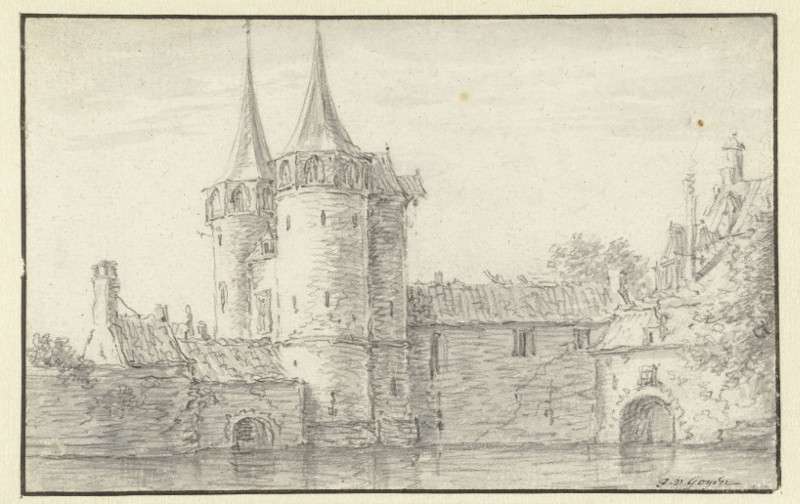
Jan van Goyen
–
Drawing on paper, 12 x 19 cm.
Rijksmuseum, Amsterdam
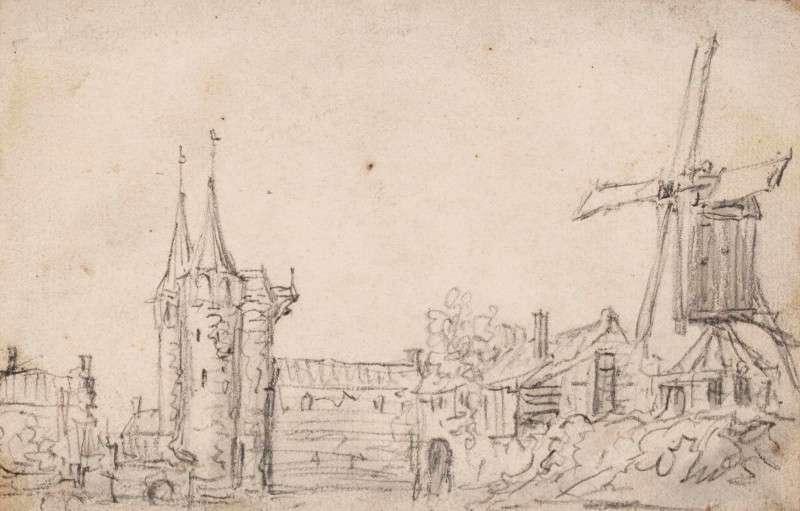
Jan Josefsz. Van Goyen
–
Black chalk, grey wash, brown ink framing lines
10.6 x 16.9 cm.
Private collection

Anonymous draughtsman: Jan van Goyen (school of)
c. 1600–1699
Brush and ink, 12.6 x 74 cm.
Rijksmuseum, Amsterdam

Hendrick Cornelisz. van Vliet
between 1652 and 1653
Oil on panel, 76 x 65 cm.
Private collection

Emanuel de Witte:
c. 1660
Oil on canvas, 80 x 66 cm.
Hermitage Museum, St. Petersburg

Louwijs Aernouts Elsevier:
1653
Oil on canvas mounted on panel, 55 x 45 cm.
National Museum of Ancient Art, Lisbo

Gerard Houckgeest
1653
Oil on panel, 43 x 52 cm.
Musées royaux des Beaux-Arts de Belgique, Bruxelles

Emanuel de Witte
1653
Oil on panel, 83 x 65 cm.
Los Angeles County Museum of Art, Los Angeles

View of Delft from the North
Jan van Goyen
1654
Oil on panel, 68 x 99 cm.
Museum Het Prinsenhof

Gerard Houckgeest:
1654
Oil on panel, 49 x 41 cm.
Rijksmuseum, Amsterdam

Egbert van den Poel
c. 1654
Oil on wood, 55 x 43 cm
Gemeente Musea, Delft

Hendrick Cornelisz. van Vliet
c. 1650–1660
Oil on canvas, 102 x 85 cm.
Collection
Liechtenstein Museum, Vienna

Hendrick Cornelisz. van Vliet
The Burrell Collection

Egbert van der Poel
1654
Oil on panel, 39.5 x 52.4 cm.
Private collection

Herman Saftleven II
Black chalk, pen and brown ink, brush and brown wash on two sheets of paper, 24.9 x 74.9 cm
Metropolitan Museum of Art, New York

Delft after the Explosion of 1654
Attributed to Daniel Vosmaer
–
Brush and gray, pink, blue and green wash, over black chalk, within brown ink framing lines, 30.4 x 395 cm.
Private collection

A View of Delft after the Explosion of 1654
Egbert van der Poel
1654
Oil on oak, 36.2 x 49.5 cm.
National Gallery, London

Daniel Vosmaer
1654
Oil on canvas
Philadelphia Museum of Art, Philadelphia

Daniel Vosmaer
–
Oil on oak, 41 x 49 cm.
Private collection

Gerbrand van der Eeckhout
Probably late 1654
Pen and brown ink, gray wash over black chalk, 10.9 x 13.6 cm.
Kupferstichkabinett, Staatliche Museen zu Berlin

Egbert van der Poel
c. 1654–1660
Oil on panel, 37 x 62 cm.
Rijksmuseum, Amsterdamn

Jan Steen
1655
Oil on canvas, 82.5 x 68.7 cm
Rijksmuseum, Amsterda

Emmanuel de Witte
1655
Oil on Canvas, 51,8 x 41 cm
Private collection

Jan de Bisschop
c. 1655–1660
Ink and brush on paper, 9.6 x 15.8 cm.
Rijksmuseum, Amsterdam

Emanuel De Witte
1656
Oil on canvas, 97 x 80 cm.
Palais des Beaux-Arts, Lille

Pieter de Hooch
1657
Oil on canvas, 69.3 x 53.8 cm.
The Royal Trust, London

in a Courtyard
Pieter de Hooch
c. 1657
Oil on canvas, 68 x 57.4 cm.
Toledo Museum of Art, Toledo (OH)

Pieter de Hooch
c. 1657–1659
Oil on canvas, 73.5 x 63 cm.
Rothschild Collection, Paris

Johannes Vermeer
c. 1657–1661
Oil on canvas, 53.3 x 44 cm.
The Rijksmuseum, Amsterdam

Pieter de Hooch
1658
Oil and canvas, 73 x 60 cm.
National Gallery, London
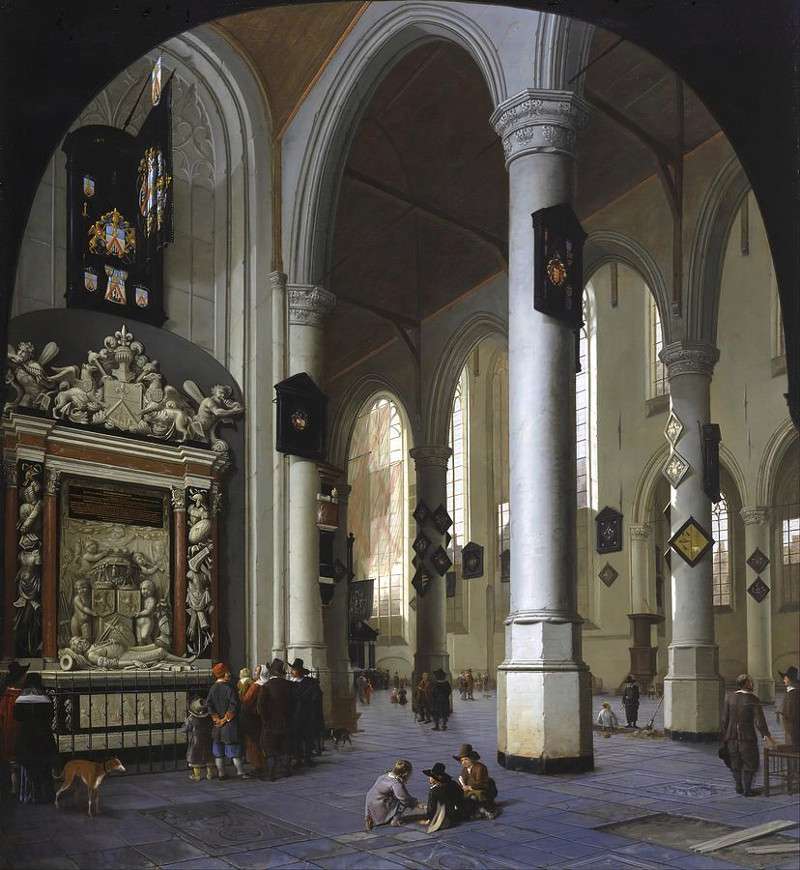
Hendrik van Vliet
1658
Oil on canvas, 123.5 111cm.
Toledo Museum of Art
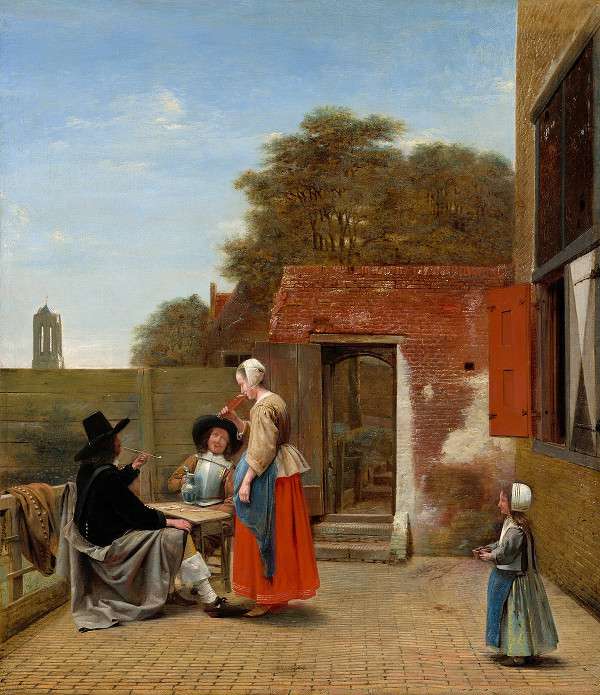
Pieter de Hooch
c. 1658–1660
Oil on canvas, 69.5 x 60 cm.
Location Mauritshuis, The Hague

Daniel Vosmaer
c. 1658–1660
Oil on canvas, 86 x 101 cm.
Museo de Arte de Ponce, Ponce, Puerto Rico
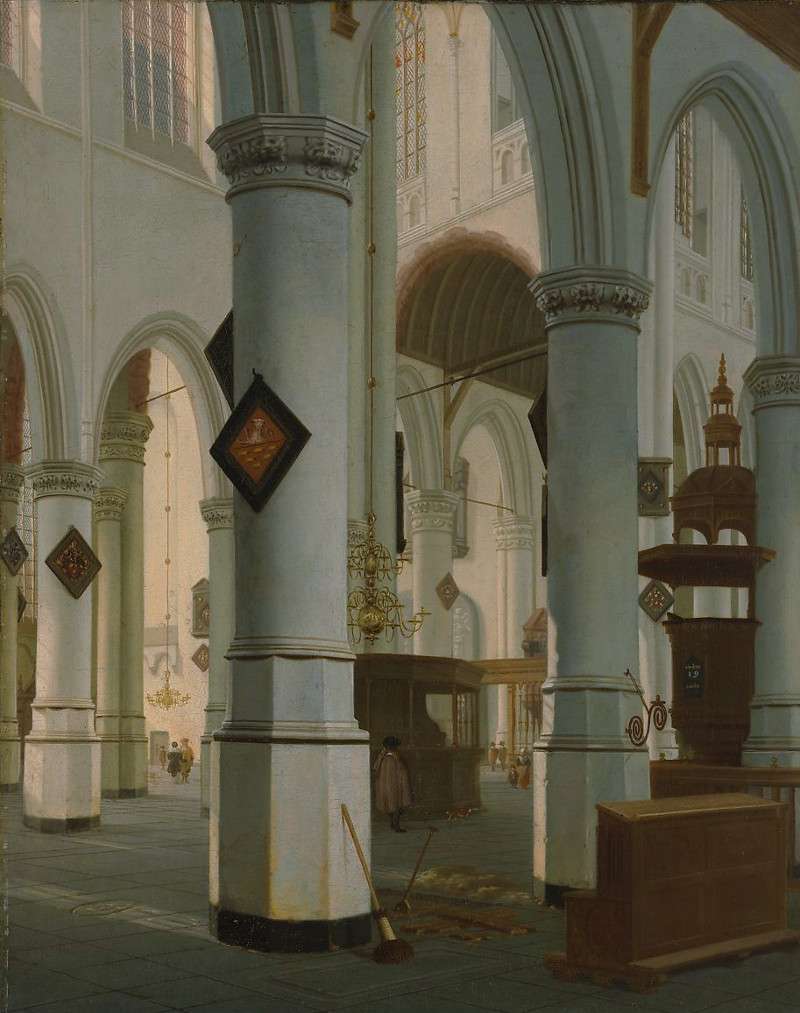
Hendrick van Vliet
1660
Oil on canvas, 82.6 x 66 cm.
Metropolitan Museum of Art, New York
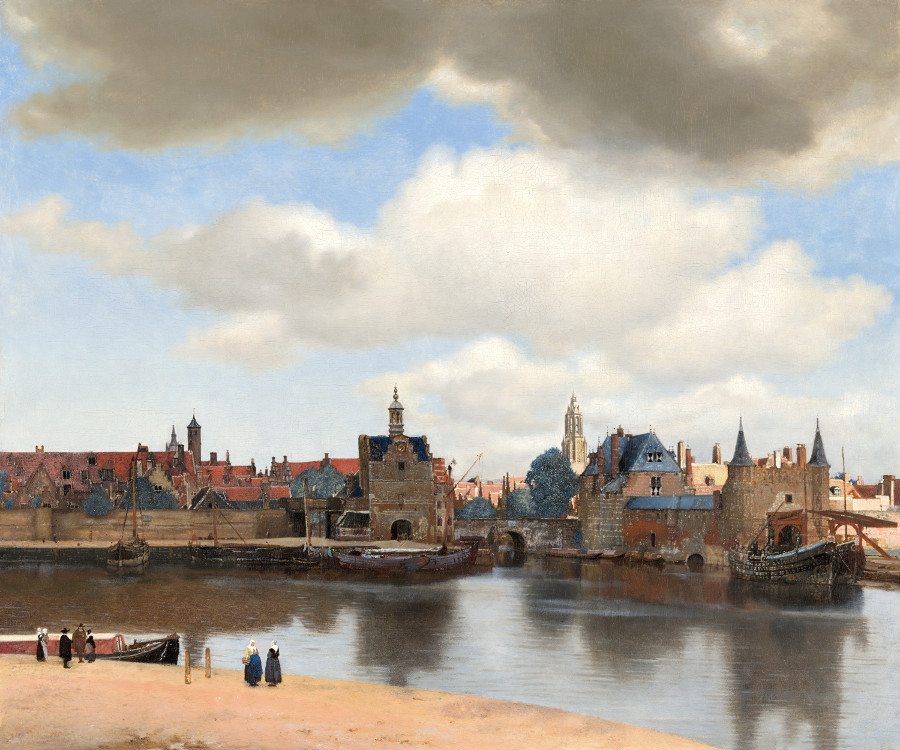
View of Delft
Johannes Vermeer
c. 1660–1663
Oil on canvas, 98.5 x 117.5 cm.
Mauritshuis, The Hague

Pieter de Hooch
c. 1660
Oil on canvas
Staatliche Kunsthalle Karlsruhe

Cornelis de Man
c. 1660
Oil on canvas,
Columbus Museum of Art, Columbus (OH)

Gerbrand van den Eeckhout
c. 1660
Watercolor and brown ink over pencil, 14.3 x 10 cm.
Kupferstichkabinett der Staatlichen, Berlin

Cornelis de Man
1660s
Oil on canvas, 124.5 x 106.8 cm.
Speed Art Museum

Cornelis de Mann
–
Oil on canvas, 104.1 x 121.9 cm.
Private collection

Hendrick Cornelisz. van Vliet
c. 1660–1665
Graphite, pen and brown ink, squared in graphite, 184 x 285 mm
Private collection

Hendrick Cornelisz. van Vliet
1661
Oil on canvas, 100 x 112 cm.
Gemeente Musea, Delft

Hendrick Cornelisz. van Vliet
1661
Oil on oak, 50.6 x 59.7 c.
Städel Museum, Frankfurt
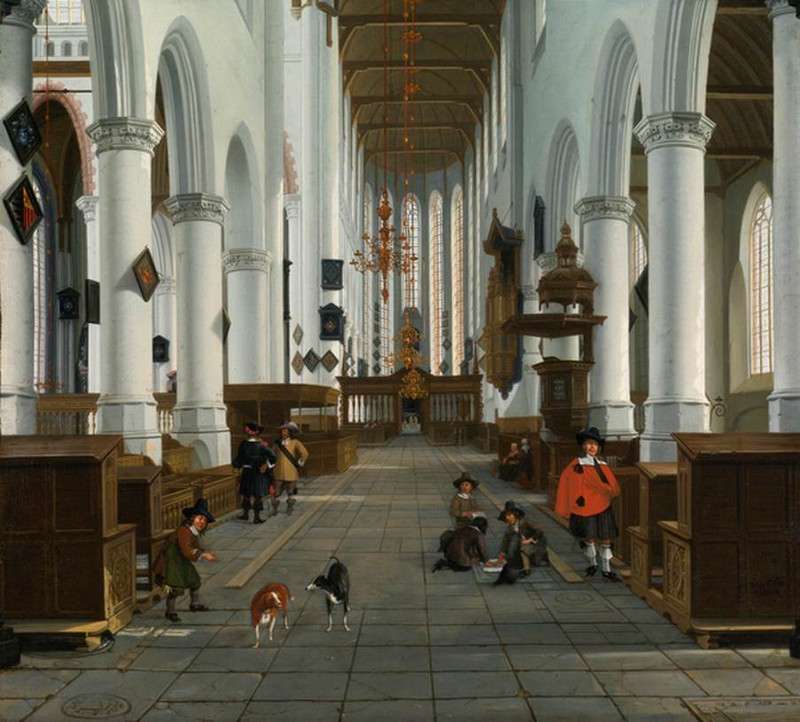
Hendrik van der Vliet
1662
Oil on canvas, 95 x 85 cm.
Private collection

Daniel Vosmaer
1663
Oil on canvas, 91 x 113 cm
Gemeente Musea, Delft
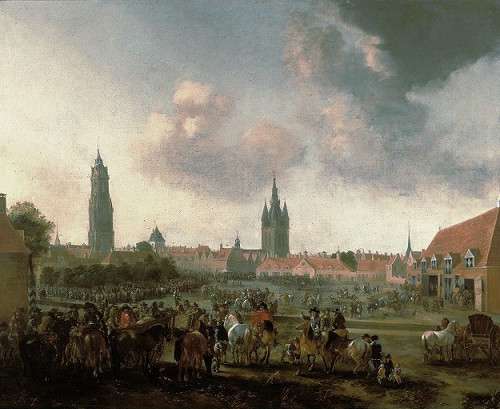
Pieter Wouwerman
1665
Oil on canvas
Het Stedelijk Museum Prinsenhof, Delft

Hendrick Cornelisz. van Vliet
c. 1665–1670
Oil on panel, 42.3 x 33.9 cm.
Private collection

Hendrick Cornelisz. van Vliet
c. 1665– 1670
Oil on panel, 42.3 x 33.9 cm.
Private collection
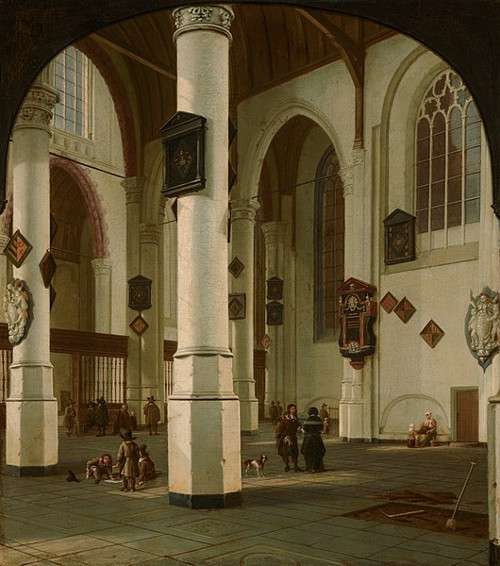
Hendrik van der Vliet
c. 1665– 1675
Oil on canvas, 77.5 x 68.2 cm.
Mauritshuis, The Hague

print maker: Joost van Geel
publisher: Jacob Quack (possibly)
publisher: Jan Houwens (I) (possibly)
Rotterdam
In or after 1666
Engraving on paper, 14.6 x 41 cm.
Rijksmuseum, Amsterdam
Ludolf Backhuysen
c. 1670–1675
Brush and gray ink, 11.8 x 16.8 cm.
Historisch Museum, Amsterdam

Jesuit Church on the Oude Langendijk
Abraham Rademaker
c. 1670
Brush and gray ink, 13.2 x 20.2 cm.
Gemeentearchief, Delft

Jan van der Heyden
1675
Oil on panel, 45 x 57 cm.
National Gallery of Norway

Emanuel de Witte
c. 1675–1685
Oil on panel, 62 × 49.2 cm.
Art Intitute of Chicago, Chicago

print maker: Coenraet Decker, after drawing by Jan Verkolje (I)
publisher: Pieter Smith (mentioned on object)
publisher: Pieter Mortier (I), Amsterdam
c. 1678–1703
Engraving, 24.1 x 63 cm.
Rijksmuseum, Amsterdam

Anonymous
c. 1690–1720
Pencil and brown wash on paper, 17.7 x 23.6 cm.
Rijksmuseum, Amsterdam

Josua de Grave
1695
Pen and brown ink on paper, 9 x 14.7 cm.
Gemeentearchief, Delft

View of Delft
Abraham Rademaker (1685–1735)
–
Ink and brush on paper, 14.5 x 28 cm.
Rijksmuseum, Asmterdam

Abraham Rademaker
c. 1700
Fragment of a colored drawing on paper
Private collection

Abraham Rademaker
c. 1700–1710
Drawing and wash, 66 x 106 cm.
Stedelijk Museum Het Prinsenhof, Delft

print maker: Leonard Schenk
intermediary draughtsman: Abraham Rademaker
publisher: Leonard Schenk
c. 1730
Etcheing on paper, 57 x 98 cm.
Rijksmuseum, Amsterdam

Jan Caspar Philips, intermediary draughtsman: Cornelis Pronk
1742
Etching, 174 x 204 cm.
Rijksmuseum, Amsterdam
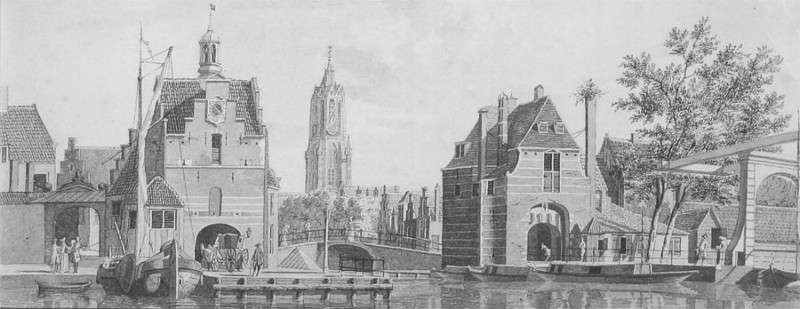
Gerrit Toorenburg
c. 1750
Teylers Museum, Haarlem

–
Gerrit Toorenburg
Pen, ink and wash, 21.3 x 18.9 cm.
Private collection
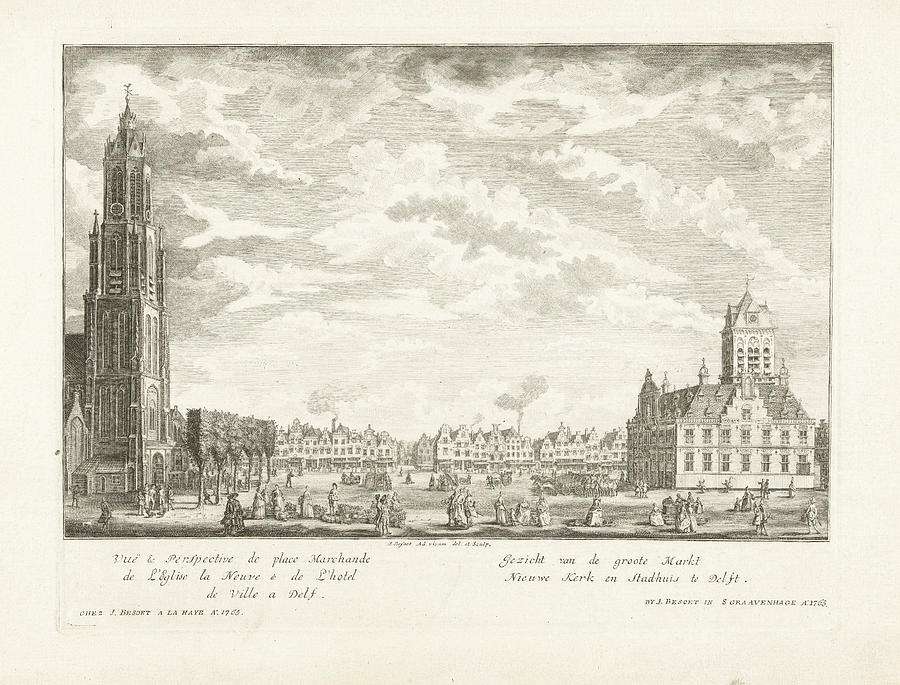
View of the Market with New Church and Town Hall in Delft J. Besoet
1765
Engraving
Nederlandse Rechtsgeschiedenis van het Gevangenismuseum

c. 1820
Graphite, pen and brown ink, brush and gray ink, 24.9 x 19.3 cm.
Gemeenarchief, Delft
The drawing reveals a glimpse of the upper part of the Delft Guildhall's central arched doorway above the arched bridge as seen through the Oude Manhuissteeg (Old Men's Alley). The facade on the left represents the inn/house owned by Vermeer's father.
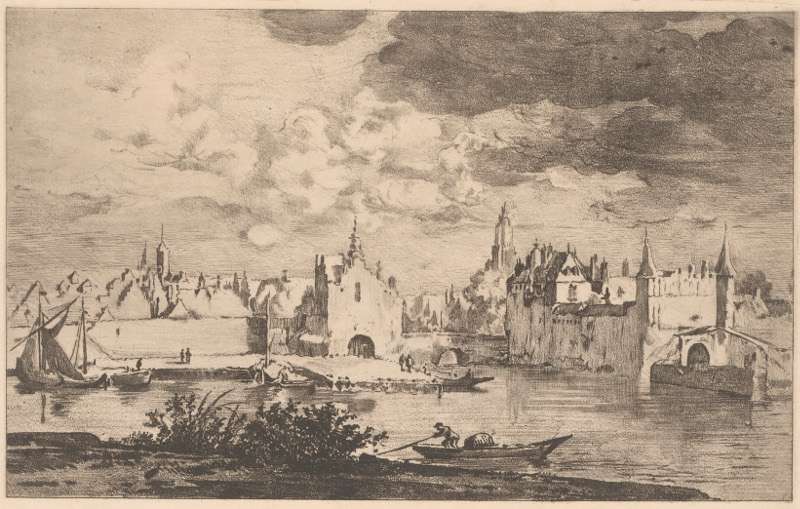
attributed to Maxime François Antoine Lalanne
c. 1837–1886
Drawing on paper, 15.8 x 23 cm.
Rijksmuseum, Amsterdam